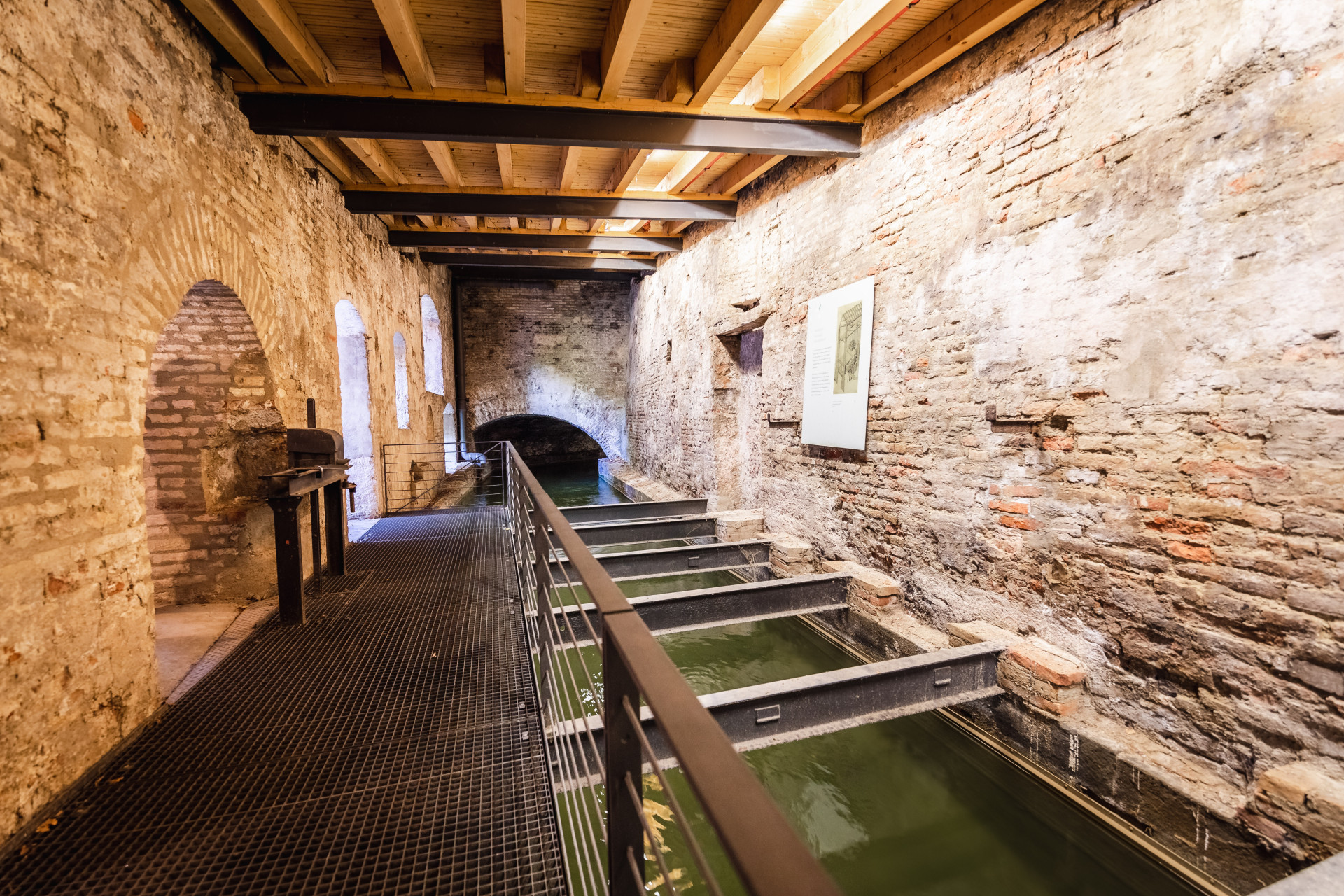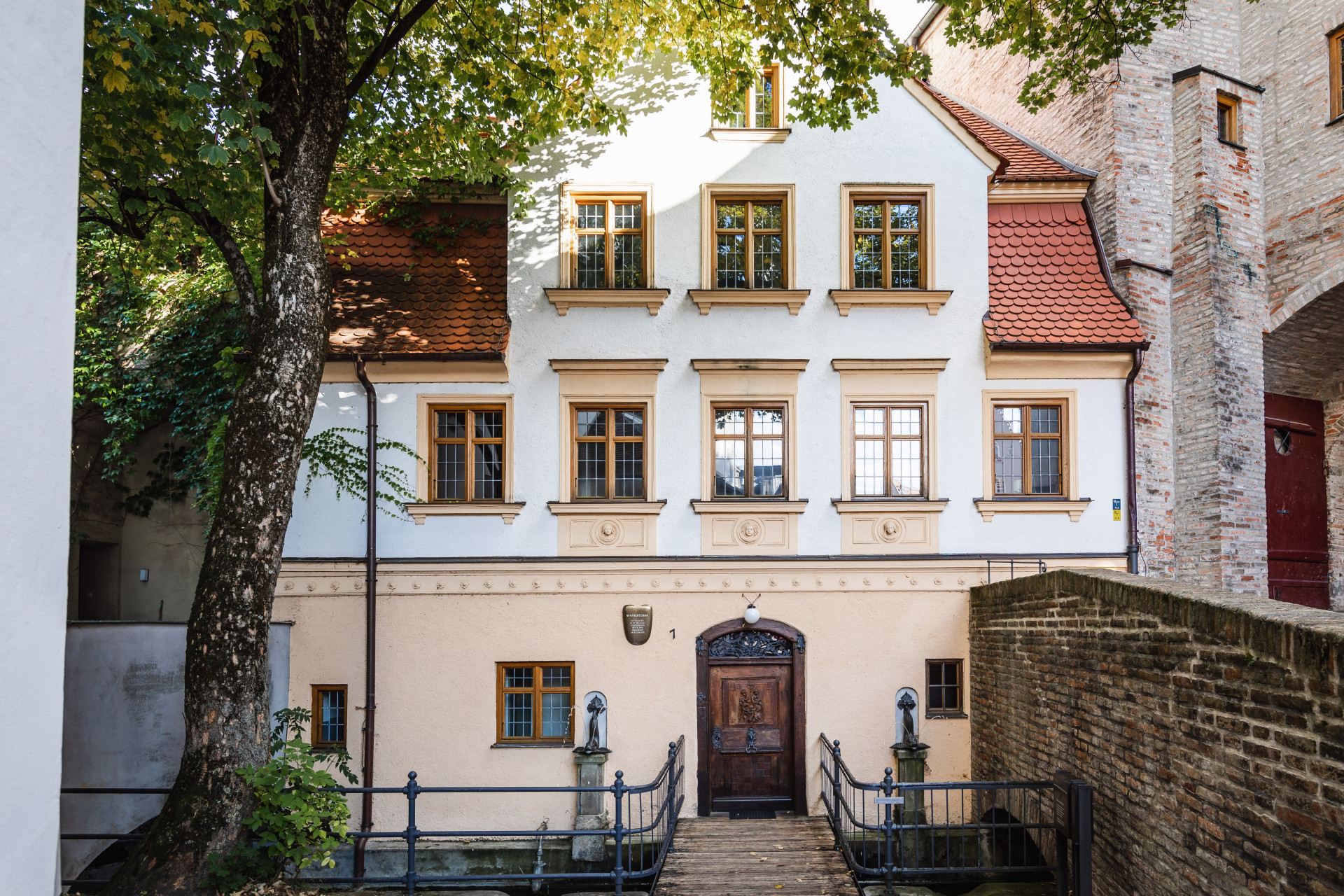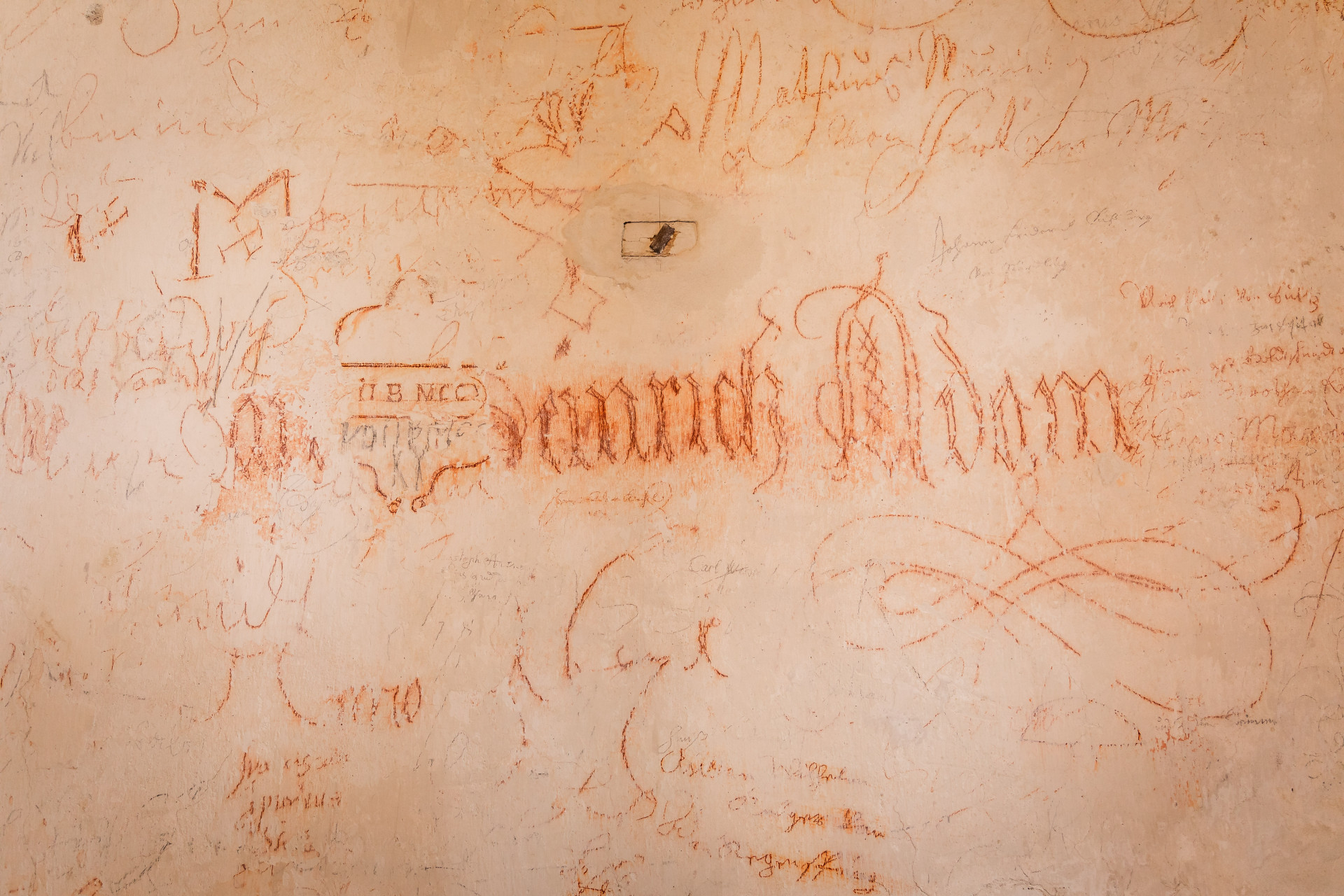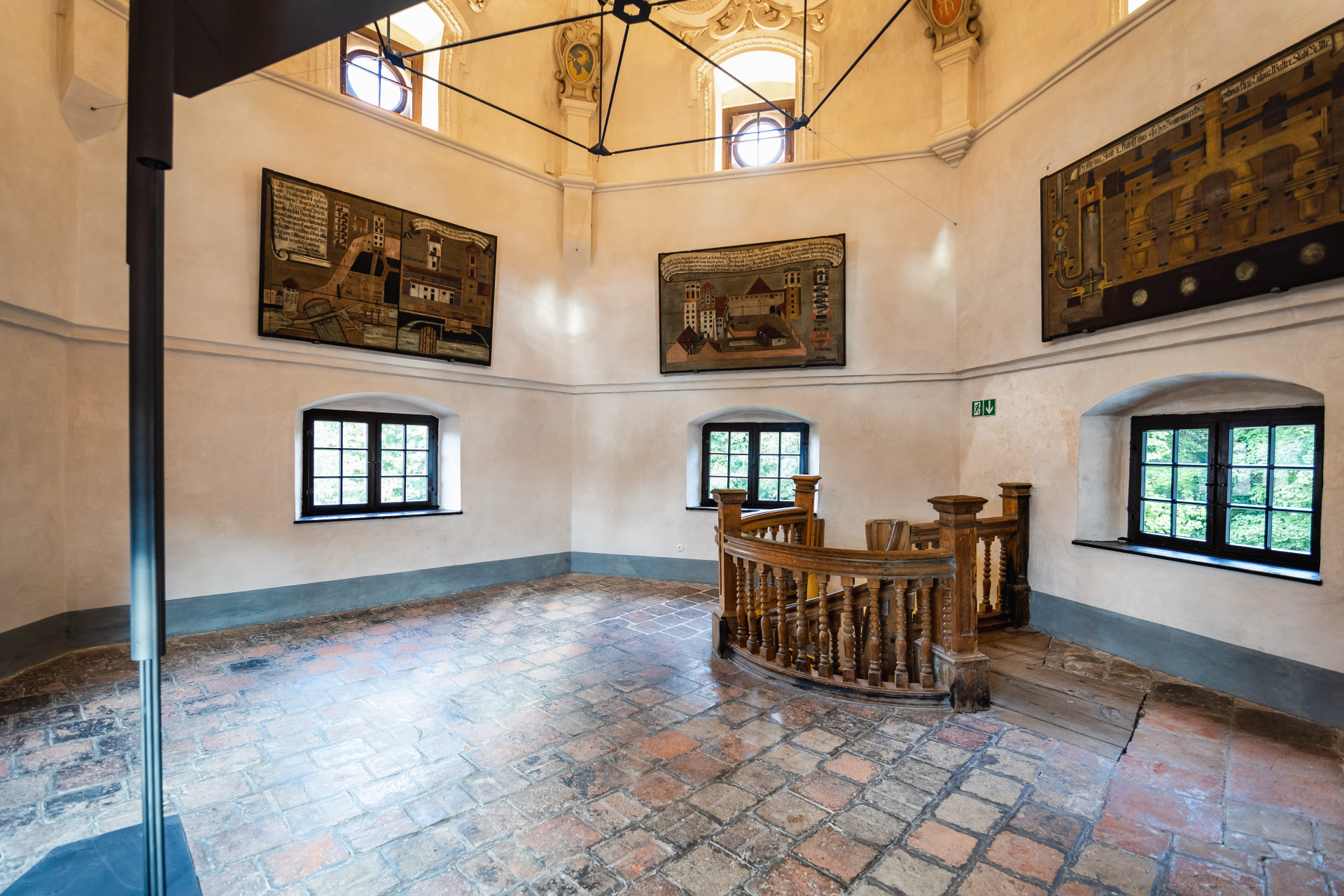
4
Waterworks at Rotes Tor
The ensemble of the three water towers was of primary importance for Augsburg´s water supply. The waterworks already pumped drinking water into the city in the 15th century. The pumping systems were continually improved over centuries and were admired throughout Europe as technical masterpieces.
Building history and description
General:
- Plant with three historic water towers, outbuildings and courtyard
- Augsburg, city center, Lechviertel - Eastern Ulrichsviertel; At the Red Gate 1
- Remodeling, additions and superstructures from 1416 to the 19th century, use until 1879
Large Water Tower:
- from 1416 by well master Hans Felber in wood
- bricked in 1463
- Increase 1669
- Construction and interior work 1764 by fountain master Caspar Walter
- Original Instruction Painting 1753
- Underflowed from the channel of the front Lech
- square base on the walls of a medieval fortified tower
- with corner stucco
- octagonal attachment with transverse oval openings and final balustrade
- pressure head approx. 29 m
Small Water Tower:
- Built in 1470
- Increase in 1599 and 1672
- 1672 and 1744 interior fittings
- Spiral staircase 1744
- six instructional paintings 1753
- Stuccoed vaulted ceiling 1672 preserved
- four-storey square base
- on the walls of a medieval defense tower
- with northeastern longwall
- two-storey, hexagonal attachment with plaster structure and hood
- pressure head around 1750: 24.8m
- Pressure head around 1817: 29m
Box Tower:
- Built in 1599 on a former defense tower
- 1703 balustrade
- 1742 interior fittings
- on the east side of the Heilig-Geist-Spital, a semicircular foundation built on the city wall
- hexagonal construction with balustrade
- double spiral staircase inside 1742
Aqueduct:
- over the Red Torwall ditch with viaduct (bridge function)
- 1777 two-storey brick in brick to six double arches (above traffic route to the city gate, down the water pipe)
Upper and Lower fountain master’s house
- two-storey mansard roof construction with dwarf house and two-storey hipped roof construction
- former official residence and workshop of the well master and warehouse
- in the core 17th century
- external appearance 18th century
Use and purpose
- Waterworks took over the drinking water supply of the city of Augsburg for about 460 years (1416-1879)
- Integration of the individual buildings into a functional unit, including use of the yard
- Waterworks at Rotes Tor as the largest waterworks of the imperial city Augsburg, thereby central role in the water system
- Supplying the public tube boxes and later the private house connections, thus humanitarian or social component
- Ongoing modifications and efficiency improvements of the well works
- Constant development of the centuries-old system from the medieval-early modern to a proto-industrial scale and thus adaptation for an increased water supply
- Demonstration, dissemination and communication of technical developments (see Model Chamber of the Maximilian Museum and publications in the city archive)
- content related to the three monumental fountains (see Box Tower)
- thematically related to waterworks at the Vogeltor and the Domviertel (supplemented urban water supply until 1879)
- predecessor of the drinking water works at the Hochablass (from 1879)
Waterworks in 3D
Authenticity and unique features
- Restoration 1972-1975
- Total renovation 2005-2010
- Today's figure of 1604
- today used as a cultural park (including the Swabian Craft Museum, open-air stage)
- technical equipment and wooden pump houses not received
- Most of the documents and models are in the possession of the Municipal Archive and the Municipal Art Collections and Museums
- oldest existing waterworks in Germany and Central Europe (highest water towers of their time)
- Technical solutions influenced by developments from across Europe and further developed in Augsburg
- singular ensemble







